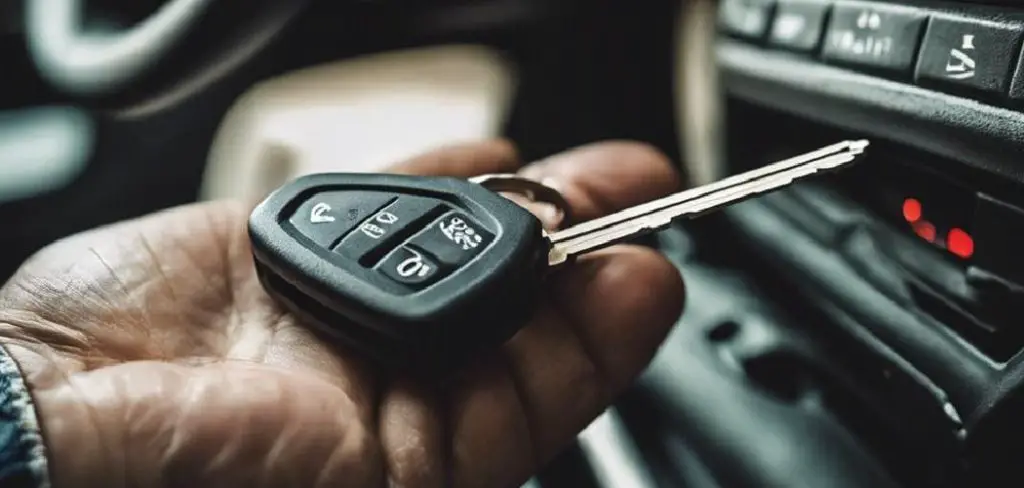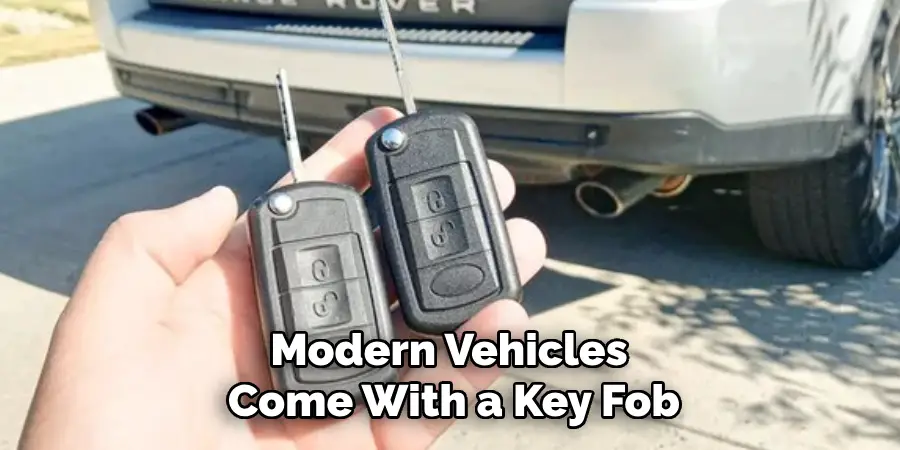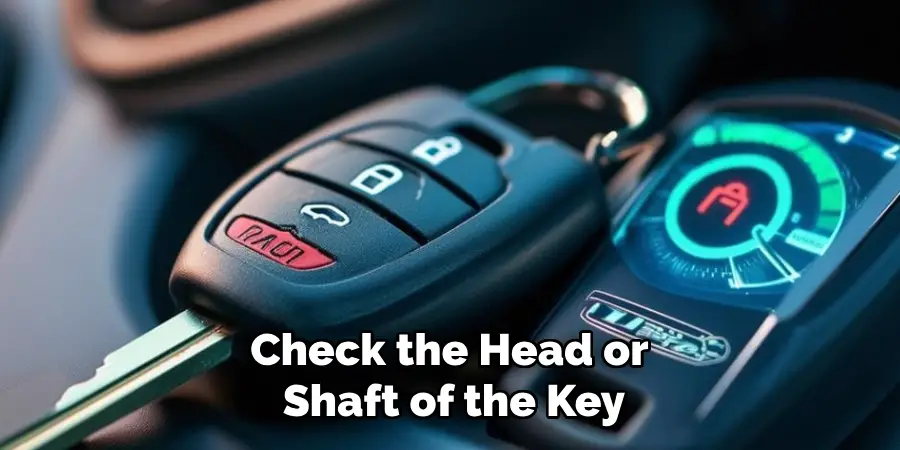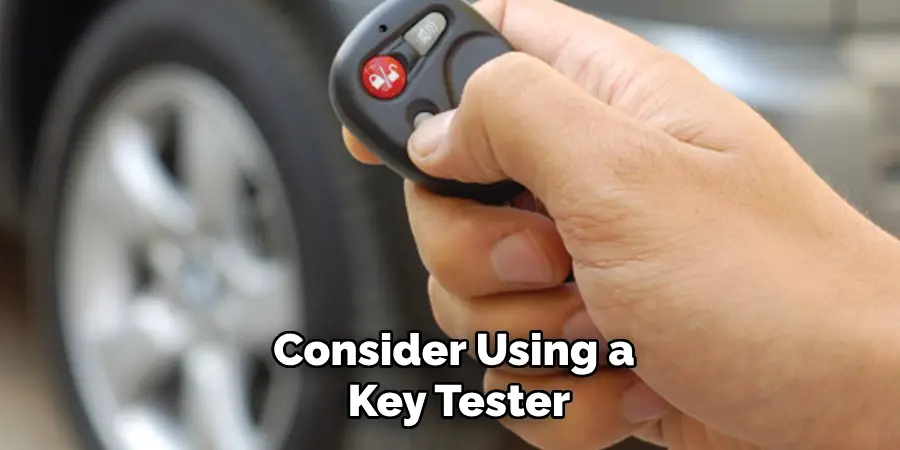Are you wondering if your car key has a chip? Chipped car keys, also known as transponder keys, are becoming increasingly common in modern vehicles.
In today’s automotive industry, many vehicles come equipped with keys that feature embedded chips, often referred to as transponder keys.

These chips are primarily used as a security measure, preventing car theft by ensuring that only a key with the correct embedded electronic code can start the vehicle. Identifying whether your car key contains a chip can be crucial, particularly when dealing with key replacements or programming.
This guide on how to know if my car key has a chip will walk you through simple steps and tips to determine if your car key is chip-enabled, helping you understand and make informed decisions about your vehicle’s security features.
What Will You Need?
Before we begin, there are a few tools you will need to perform the necessary checks. These include:
- A spare key (if available)
- A magnifying glass or jeweler’s loupe
- Access to your car’s owner manual (optional)
Once these items are ready, you can proceed with the following steps.
10 Easy Steps on How to Know if My Car Key Has a Chip
Step 1: Check for a Key Fob
Many modern vehicles come with a key fob that serves multiple purposes, including locking and unlocking the car doors remotely. However, a key fob does not necessarily mean that the key contains a chip.
The key fob may operate purely on a radio frequency signal distinct from a transponder chip. To determine if your key does have a chip, closely inspect the key that may be attached to or integrated with the fob. Examine the head of the key for signs of thickness or electronic components that suggest the presence of a chip.

A common characteristic of chipped keys is a slightly larger head to accommodate the transponder chip inside. If your car key appears particularly slender with no apparent signs of added electronic features, it may not contain a chip. Understanding this distinction is the first step in accurately identifying a chipped key and ensuring you take the appropriate actions for replacement or programming as needed.
Step 2: Look for a Plastic Coating
Next, inspect your key for any head or grip section plastic coating. Transponder keys often have a noticeable plastic coating that encases the chip within. This is because the electronic component needs protection from external elements and wear.
Gently feel the thickness of the plastic; if it seems substantial compared to a traditional metal key, it might indicate the presence of a chip inside. This plastic casing can be more challenging to decipher since some non-chipped keys also come with plastic heads for easy handling.
However, a transponder key generally has a more robust and heavier grip due to the encased electronics, which helps you differentiate it from a typical, non-chipped alternative. Checking this aspect will further aid in distinguishing a transponder key from a basic one.
Step 3: Examine for a Visible Transponder
Some keys may have a visible transponder chip that is easy to identify. Check the head or shaft of the key for a small glass or plastic square, rectangle, or circle that might encase the chip. This small piece is sometimes positioned visibly, allowing owners to identify the embedded component quickly.

If you notice such a detail, your key likely contains a transponder chip. While not all chipped keys have a visible component, seeing this feature provides clear evidence of a transponder presence, reducing the guesswork involved in determining if your car key has a chip.
Step 4: Consult Your Car’s Owner Manual
Refer to your vehicle’s owner’s manual to check the specifications of your car key. The manual often describes the type of key used for your vehicle and whether it includes an electronic transponder chip. Look for sections detailing key features and vehicle security systems.
This information can offer a straightforward confirmation if your key is chip-enabled. Using the owner manual is reliable because it supplies vehicle-specific information directly from the manufacturer, ensuring accuracy in your findings. This reference point is handy, particularly when you encounter uncertainty during a visual inspection of your key.
Step 5: Verify with a Professional
If you still need to decide whether your car key has a chip after your inspections, consult with a professional locksmith or your car dealership. These professionals can quickly identify and verify the presence of a transponder chip using specialized tools and equipment. Many automotive locksmiths are equipped to read and test keys for chip technology, providing a definitive answer.
A critical verification service might involve using a transponder reader, which detects electronic signals emitted by the chip, thus confirming its existence. Seeking experts to help ensures you gain clear insights and can make informed decisions regarding critical replacements or programming without any guesswork.
Step 6: Use a Key Tester Device
Consider using a key tester device to independently verify the presence of a transponder chip in your car key. These devices are designed to detect electronic signals emitted by the chip when the key is placed near the tester. You can quickly identify whether a chip is present by simply inserting your car key into the tester.
Critical tester devices are available for purchase at various automotive stores or online. This tool provides an additional layer of verification, which is beneficial if you want to double-check your findings before proceeding with any key-related services. This step can offer peace of mind by confirming the chip’s technological existence.

Step 7: Observe Your Car’s Dashboard Light
Insert your car key into the ignition and turn it to the “on” position without starting the engine. Pay attention to the dashboard lights, remarkably the security or immobilizer light. In many vehicles equipped with transponder systems, this light will flash or remain illuminated briefly, indicating that the car’s immobilizer system is active and ready to communicate with the key’s chip.
Suppose you notice the light behaving differently than usual, like remaining on longer or flashing rapidly. In that case, it may suggest that your key contains a chip that is not recognized by the vehicle. Observing this dashboard indicator can provide additional insight into whether your key is equipped with a transponder chip, making it a helpful step in the verification process.
Step 8: Test Your Car’s Ignition System
Another practical way to determine if your car key contains a chip is to test it with your car’s ignition system. Insert the key into the ignition and attempt to start the car. Suppose your vehicle starts and runs smoothly with no signs of stalling or stopping. In that case, it’s possible that the key is properly communicating with the car’s security system, indicating that a chip is present.
Conversely, if the engine fails to start or you experience difficulties shortly after starting it, this might suggest the key isn’t programmed correctly or lacks the necessary chip for communication. This method provides a direct and functional check to gauge the presence and effectiveness of a transponder chip in your car key.
Step 9: Utilize a Spare Key
If you have a spare key that originally came with your vehicle, use it as a point of comparison for chip verification. Often, spare keys are identical to the primary key regarding transponder chip inclusion. Insert the spare key into your car’s ignition and attempt to start the vehicle. If the car starts normally, both keys likely contain the necessary chip technology.
This approach can be advantageous when you have multiple keys for your vehicle and must verify if they all include a transponder chip. Comparing the performance of the spare key to the primary key can provide additional confirmation on the presence of electronic components, easing decisions on programming or replacements.
Step 10: Contact Your Car Manufacturer
If all else fails and you’re still uncertain whether your car key has a transponder chip, consider contacting your car’s manufacturer directly. They can provide detailed information and confirm whether your vehicle’s model and year typically come with chip-enabled keys.
Manufacturer customer service departments are equipped to handle queries related to vehicle specifications, including critical features. Explaining your situation and providing your vehicle’s identification number (VIN) can help streamline the process and ensure you receive accurate information.
By following these steps, you can confidently determine whether your car key contains a transponder chip, providing valuable information for future key-related services or replacements.

Conclusion
In conclusion, identifying whether your car key contains a transponder chip is straightforward when you diligently follow the outlined steps.
Begin by visually inspecting your key for signs of chip technology and consulting your vehicle’s owner manual for specific details. Utilize professional services like locksmiths and car dealerships for expert verification, and consider investing in a critical tester device for personal assurance.
Observing your car’s dashboard lights and testing the ignition system can provide functional confirmation while comparing it with a spare key can offer additional insights. Lastly, contacting your car manufacturer directly can resolve any doubts through verified information.
Hopefully, the article on how to know if my car key has a chip provides helpful guidance for anyone seeking clarity on their key’s technology. Stay informed and make informed decisions when it comes to your car key!
